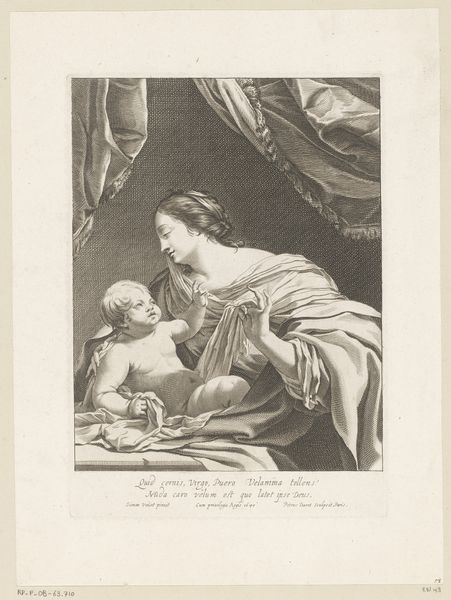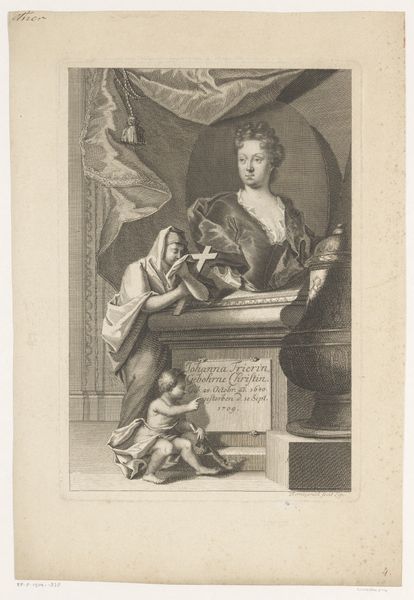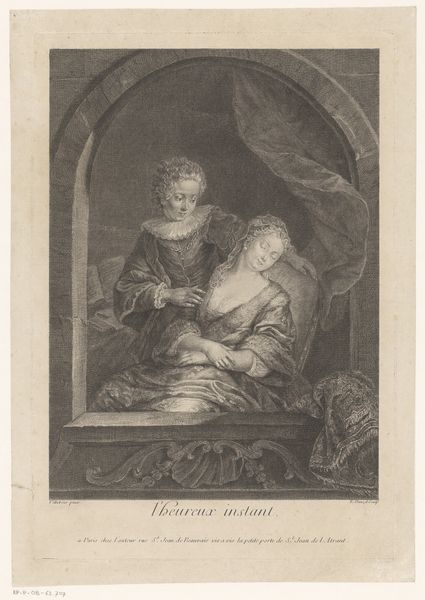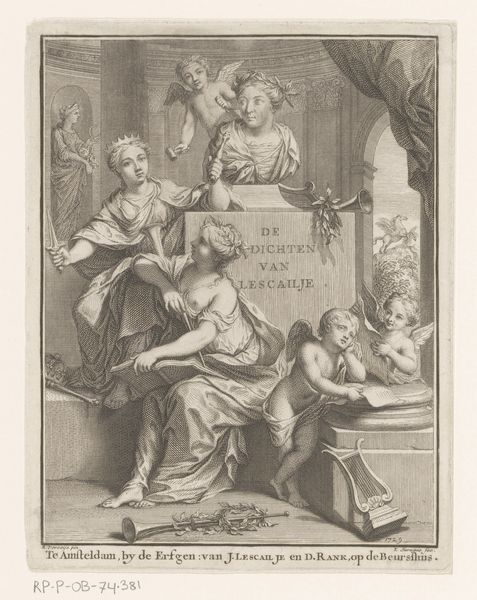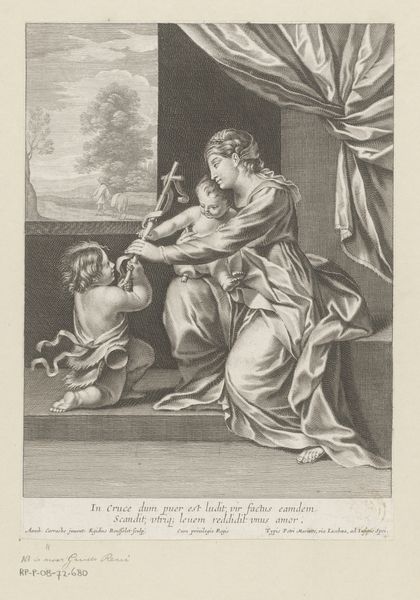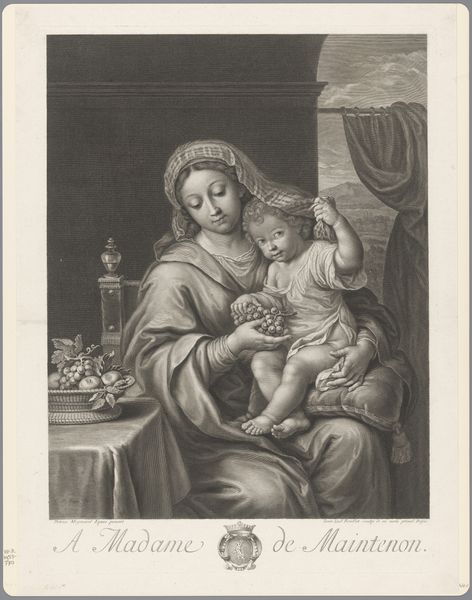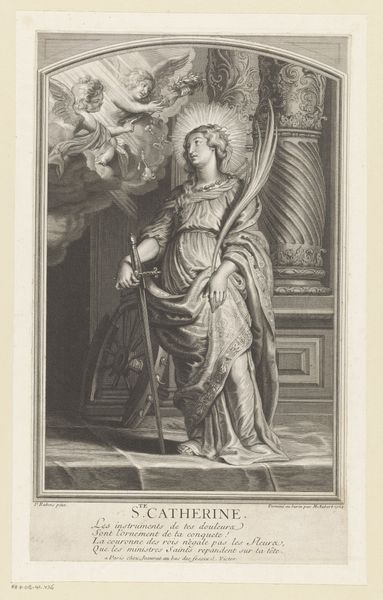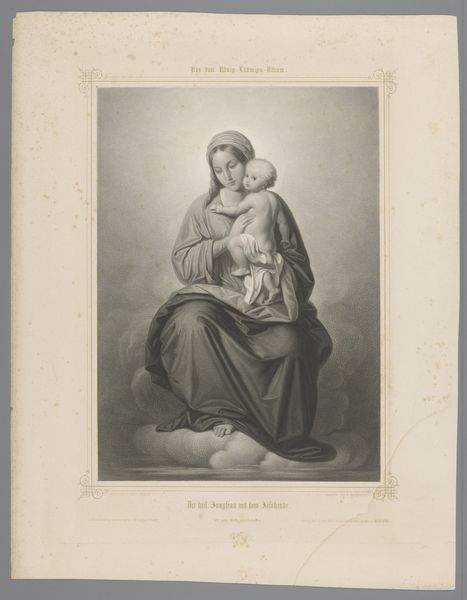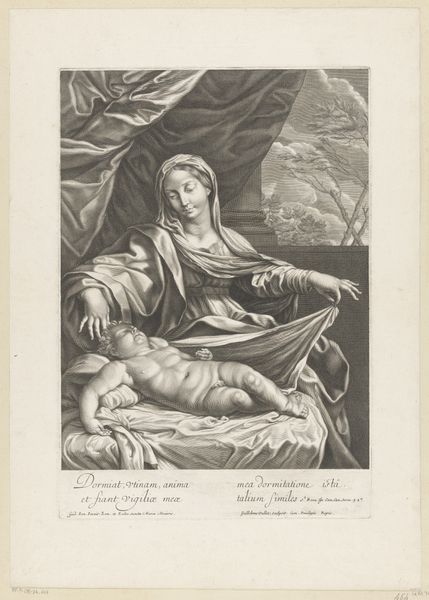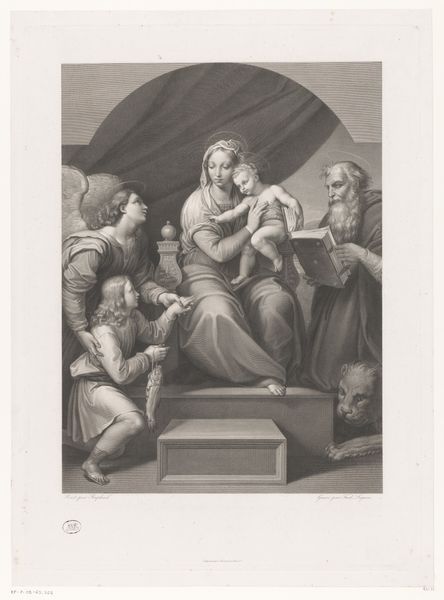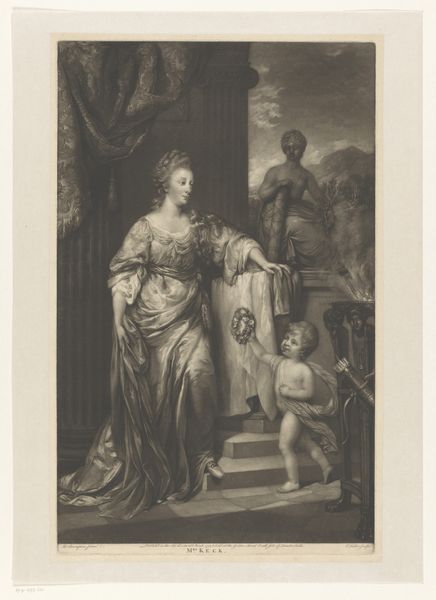
print, engraving
#
portrait
#
baroque
# print
#
history-painting
#
engraving
Dimensions: height 498 mm, width 357 mm
Copyright: Rijks Museum: Open Domain
Curator: Let’s consider "H. Agnes," an engraving produced in 1759 by Robert Strange, after a painting by Domenichino. It certainly strikes a particular chord. What's your initial take? Editor: Serene, yet somehow melancholic. The monochrome palette focuses attention on form. Note the weight and drape of the fabrics, countered by the hopeful upward gaze of the subject. And, of course, that cherub hovering with a crown. Curator: Indeed. Robert Strange, though Scottish, spent considerable time studying in Italy, specifically to master history painting and portraiture—both significant cultural signifiers then. This work reflects that engagement. We can understand the Baroque aesthetics at play, with dynamic movement suggested despite it being a static engraving. Editor: What are we to make of Agnes herself? She appears almost caught mid-prayer, the cherub’s crown alluding to imminent sainthood. But her clasped hands look less pious and more... conflicted. Is it the cost of devotion this composition evokes? Curator: Good question. From an art historical angle, it's vital to remember the societal framework of the time. The engraver had to appeal to a discerning aristocratic and educated clientele who were very much interested in Italian Baroque and historical paintings, so this piece had to capture certain ideas around piety but it does that in a decorative and pleasing aesthetic. The details - classical urns and architectural details help define her space and suggest virtue and prestige. Editor: Right. The iconography also functions within specific channels of communication: saintly humility balanced against obvious wealth and position, communicated effectively by symbols. The semiotic construction invites decoding— the lamb symbolizing purity and sacrifice, a central aspect to her saintly story, or a cherub signifying divine recognition. Curator: All pointing to this intriguing blend of personal devotion and public portrayal. The historical context further illuminates this complex layering, adding to its fascination. Editor: It all circles back to the visual grammar through which Agnes's story—and the engraver's craft—are delivered to a distinct viewership of that time. Something we still unpack today. Curator: Exactly! Viewing this through the lens of compositional structure while appreciating its cultural setting gives us a far richer experience.
Comments
No comments
Be the first to comment and join the conversation on the ultimate creative platform.
